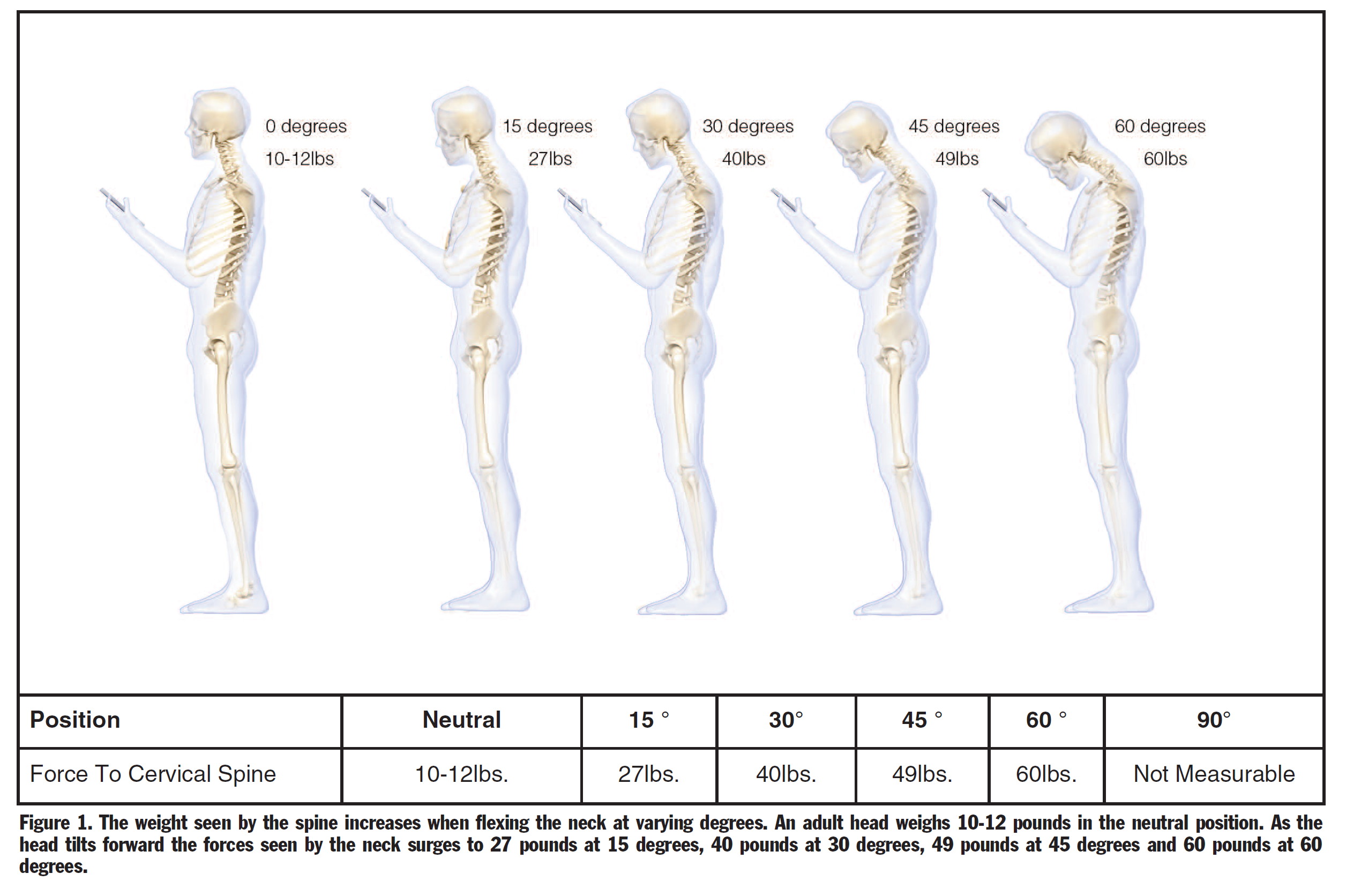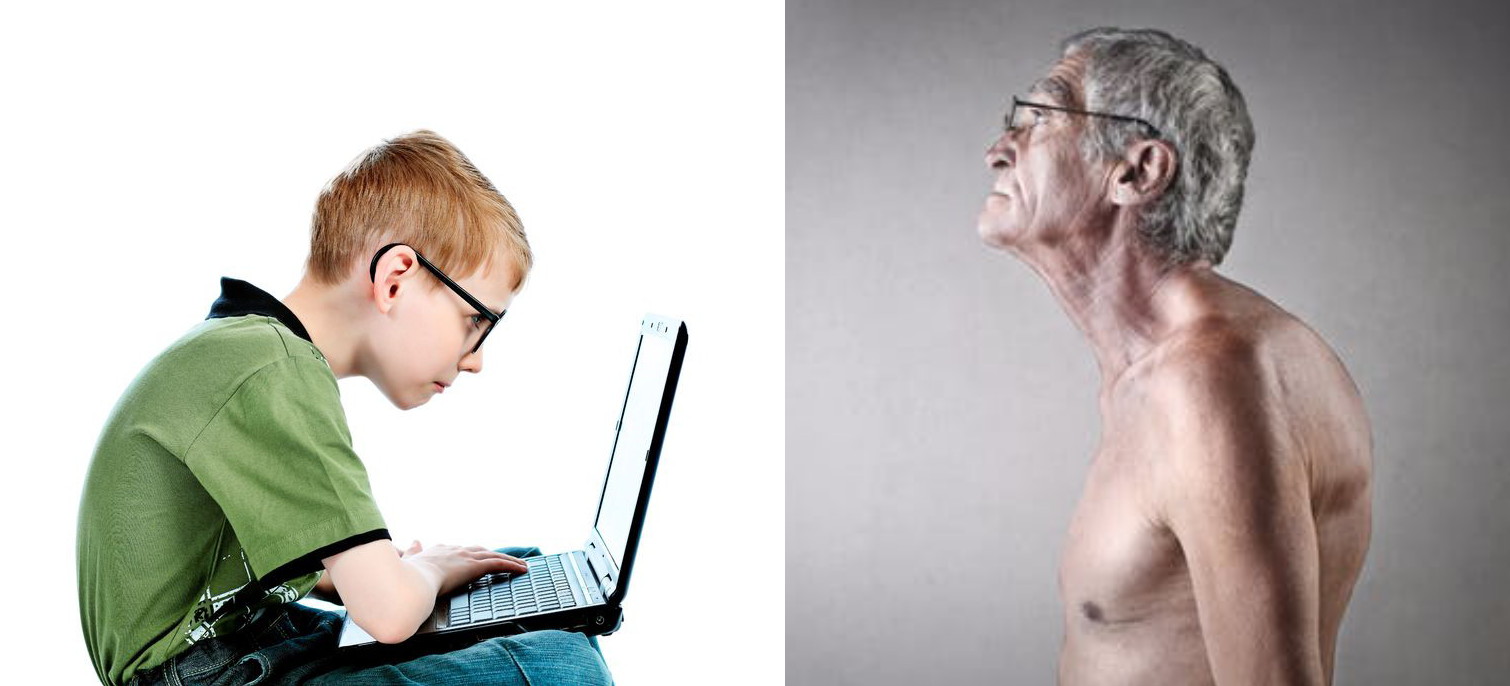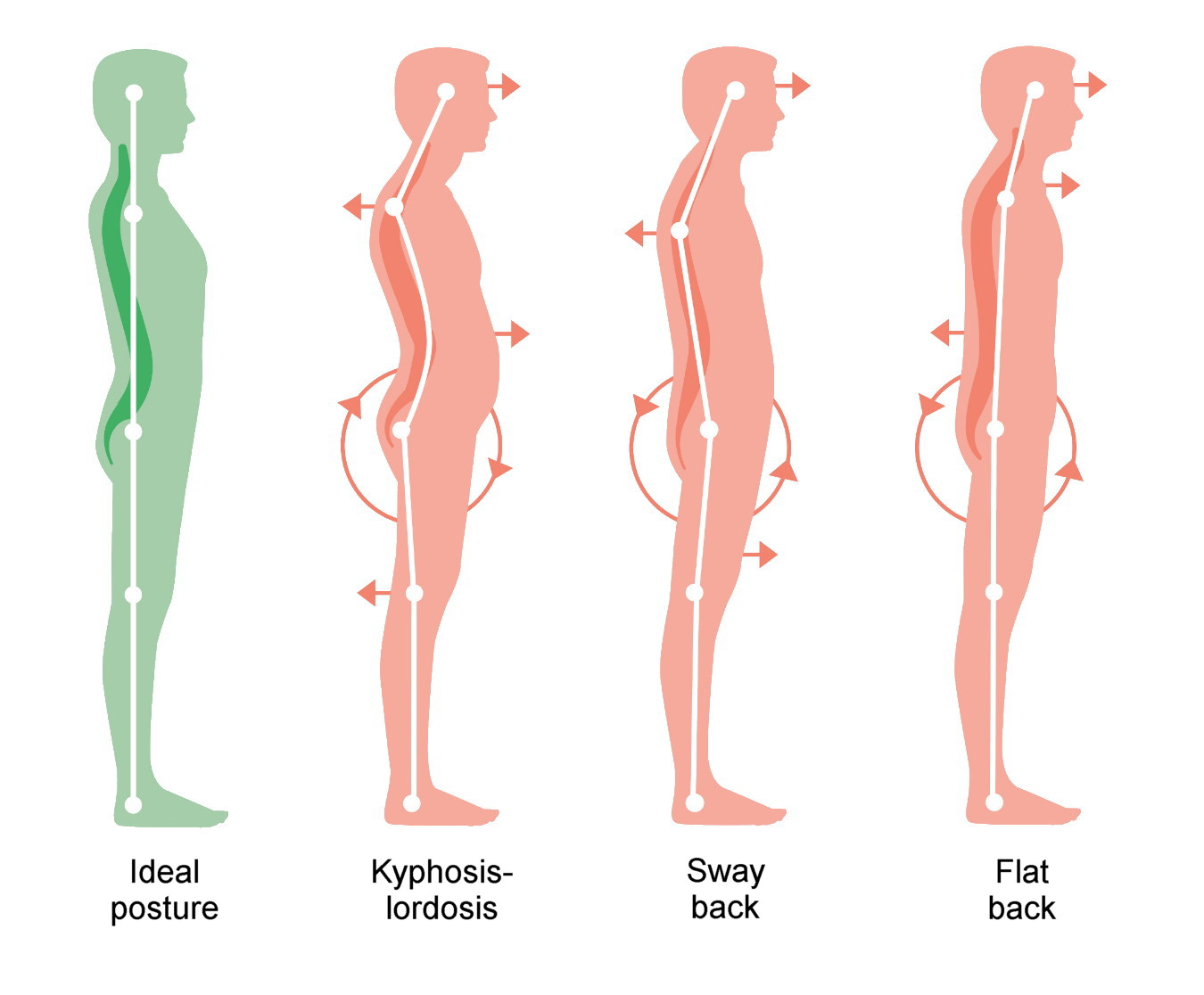Correction de la posture de la tête vers l'avant avec pandiculation
Forward head posture is becoming an epidemic due to constant use of smartphones and computers. When we look downward over and over, the muscles in the front of our neck, our chest, and our abdomen become chronically contracted—and they keep us stuck in forward head posture all the time.
La raison pour laquelle les professionnels de la santé sont si préoccupés par la posture de la tête vers l'avant est qu'elle entraîne de nombreux problèmes graves tels que des problèmes de disque, un engourdissement des bras et des mains, des spasmes musculaires, des douleurs chroniques, une respiration superficielle, des maux de tête et des troubles de l'articulation temporo-mandibulaire.
Your posture can feel as though it’s out of your control and impossible to change. The reason it feels like this is because when your muscles are chronically contracted, they are being controlled automatically by your nervous system, and you’ve lost full voluntary control of them.
Luckily, as you’ll learn in this post, you can regain voluntary control of your muscles and release deeply held muscular contraction with pandiculation.
Qu'est-ce que la posture de la tête vers l'avant ?
La posture de la tête vers l'avant décrit notre posture lorsque nous inclinons la tête vers le bas et/ou amenons notre tête et notre cou devant le reste de notre colonne vertébrale.
Research released in 2014 by Dr. Kenneth Hansraj, Chief of Spine Surgery at New York Spine Surgery & Rehabilitation Medicine in New York, brought a great deal of attention to forward head posture. His research determined the now oft-quoted measurements of how increasing strain is put on our cervical spine the further forward we hold our head.

Reprinted from Assessment of Stresses in the Cervical Spine Caused by Posture and Position of the Head
Pourquoi développons-nous la posture de la tête vers l'avant ?
Avant que les ordinateurs personnels et les smartphones ne deviennent omniprésents, la posture de la tête vers l'avant n'était généralement observée que chez les personnes âgées. À mesure que nous vieillissons, la contraction musculaire réflexive qui se produit avec le stress s'accumule, tirant notre tête et nos épaules vers l'avant et provoquant la posture arrondie que nous associons au vieillissement.
However, now that people of all ages—even toddlers—are using personal electronic devices, we’re seeing forward head posture develop at very young ages. When you consider that the average person between the ages of 8 and 18 spends about 7.5 hours a day using some form of electronic media, it’s easy to see how quickly this posture can become a habit.
It’s virtually impossible to use a smartphone without tilting your head downward and contracting your neck muscles, biceps, pectoralis, and upper rectus abdominis. It takes a great deal of conscious attention, as well as an ergonomic setup if you’re sitting down, to prevent this posture from becoming habitual.
Nous pouvons nous promener dans un centre commercial pour observer les effets des smartphones, des ordinateurs et de la sédentarité sur les jeunes. Cela me rend toujours triste de voir un adorable adolescent dans la force de l'âge qui a déjà commencé à s'arrondir comme s'il avait 80 ans.

A study of over 800 Australian teenagers found that computer use was associated with forward head posture. The forward flexion of the teenagers’ necks was consistent whether the teens were looking straight ahead, looking downward, sitting in a slumped position, or standing up. At their young age, forward head posture was already so deeply learned that their necks remained flexed forward even when they weren’t at the computer.
Les schémas musculaires de la posture de la tête vers l'avant
Disons que vous vous tenez parfaitement droit. Vous prenez votre smartphone en pliant les bras et en les rapprochant de votre corps. Vous inclinez la tête vers le bas pour regarder votre téléphone, et amenez probablement un peu la tête devant votre corps afin de mieux voir l'écran.
All the muscles that flex your cervical spine forward—your sternocleidomastoid, anterior scalene, longus capitis, and longus colli—are now contracted. So are your biceps, which flex your elbows; your pectoralis muscles, which rotate your shoulders inward; and probably your upper rectus abdominis, which flexes your thoracic spine, rounding your upper back.
Immediately, the muscles in your back engage so that you won’t fall forward. This contraction happens reflexively and without our conscious awareness. Our vestibular and proprioceptive systems are good like that—they’ll do whatever they can to keep us from falling over.
Lorsque vous arrêtez de regarder votre téléphone, les muscles qui étendent votre colonne cervicale se contractent pour relever votre tête afin que vous puissiez regarder droit devant vous.
People compensate for the displaced weight of their head in three typical ways. Some arch their lower back, so that both the kyphotic and lordotic curves of their spine are exaggerated. Others shift their hips forward and come into sway back posture. Others contract their lower abdominals and round forward into flat back posture.

Les effets dangereux sur la santé de la posture de la tête vers l'avant
Si nous n'adoptons la posture de la tête vers l'avant que de temps en temps, ce n'est pas grave. Mais lorsque nous sommes dans cette posture tous les jours, plusieurs heures par jour, notre système nerveux le remarque.
Our nervous system likes to be as efficient as possible, so when we repeat a posture over and over, it will begin to keep the muscles involved in that posture partially contracted all the time. This is the process of developing muscle memory; it saves us time and conscious brainpower, but it results in chronic muscle tension, reduced sensorimotor awareness, and a host of health problems.
Without conscious intervention, muscle tension and our resulting posture only get worse with time. Our proprioception adjusts so that we feel more and more comfortable in the unnatural posture, and our gamma loop adjusts to maintain increasing levels of muscle tension.
Tight neck muscles can be sore and painful, and they contribute to headaches and temporomandibular joint disorders. Chronic muscle tension in the cervical spine also compresses the cervical vertebrae. This often leads to disc degeneration, bulging or herniated discs, osteoarthritis, Dowager’s Hump, and tingling or numbness in the arms and hands.
La contraction des muscles pectoraux et du haut droit de l'abdomen qui se produit généralement avec la posture de la tête vers l'avant peut entraîner un syndrome du défilé thoracique, une respiration superficielle et une hypertension artérielle.
La contraction des muscles du bas du dos qui se produit inévitablement afin de garder us de tomber vers l'avant entraîne une oppression et des douleurs dans le bas du dos, des spasmes musculaires, des problèmes de disque lombaire, de l'arthrose et une sciatique.
I hope these health problems have gotten your attention. Even if your forward head posture is mild right now, it can easily get worse as you get older, and it is much easier to fix it now than after you’ve developed a painful condition.
To learn more about the health effects of your posture, read 10 Shocking Ways That Your Posture Affects Your Health.
Pourquoi la pandiculation est le moyen le plus efficace de corriger la posture de la tête vers l'avant
De nombreux physiothérapeutes, chiropraticiens et entraîneurs recommandent d'étirer le cou et les épaules et de renforcer le dos et les épaules afin de corriger la posture de la tête vers l'avant. Malheureusement, ces approches ne s'attaquent pas à la cause sous-jacente du problème : la contraction chronique et subconsciente des muscles à l'avant du cou, de la poitrine et du haut de l'abdomen.
When our nervous system has learned to keep these muscles tight, no amount of stretching or pulling in the opposite direction with strong back and shoulder muscles will release them. We must go through a process of retraining our nervous system in order to reduce the resting level of tension in these muscles and change our habitual posture.
Pandiculation is our nervous system’s innate response to a buildup of tension in the muscles. This natural process reduces muscle tension by restoring normal gamma loop activity. Clinical Somatics exercises are voluntary pandiculations, and they use our natural pandicular response to release tight muscles. Since pandiculation reduces muscle tension through learning rather than stretching or external manipulation, the results are typically long-lasting and cumulative.
Pandiculation exercises for forward head posture
The following exercises from the Level One & Two Courses are the most effective exercises for releasing the tight muscles that cause forward head posture and the associated postural patterns.
If you want more guidance on how to improve your posture, please read Comment recycler votre proprioception et votre posture.
Cours de Niveau Un
Arch & Flatten: This exercise allows you to release and regain control of the lower back and abdominal muscles, improving the alignment of the pelvis and lower back.
Arch & Curl: This exercise releases the abdominal, chest, and neck muscles. If you do just one exercise per day to address forward head posture and/or postural kyphosis, this should be it!
One-Sided Arch & Curl and Diagonal Arch & Curl: Like the Arch & Curl, these exercises release the abdominal, chest, and neck muscles. They focus on one side of your body at a time, allowing you to address imbalances in your muscular patterns.
Flowering Arch & Curl: This is a bigger, full-body version of the Arch & Curl. It has the added benefit of releasing internal rotation of the shoulders.
Cours de Niveau Deux
Head Lifts: This exercise works directly with releasing the muscles that pull the head forward (independent of pulling the rib cage forward and down), including the sternocleidomastoid and anterior scalene.
Proprioceptive Exercise 1: This is a seated exercise practiced in front of a mirror, allowing you to retrain your posture and proprioception.
Scapula Scoops 2: This exercise releases the pectoral muscles, which rotate the shoulders inward and are typically tight in people with forward head posture.
Diagonal Curl: This exercise releases the obliques and the pectorals, allowing the chest to open up.
Lecture recommandée:
The Pain Relief Secret: How to Retrain Your Nervous System, Heal Your Body, and Overcome Chronic Pain by Sarah Warren, CSE
Somatics: Reawakening the Mind’s Control of Movement, Flexibility and Health by Thomas Hanna

